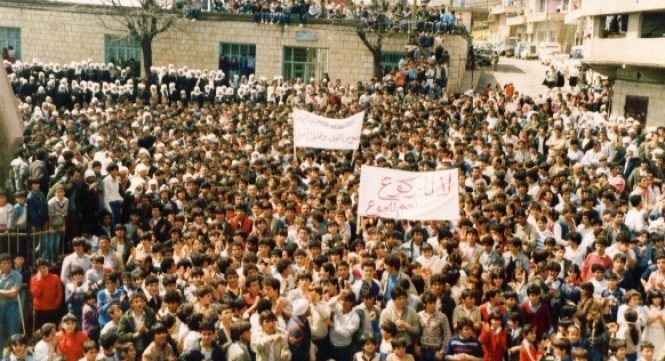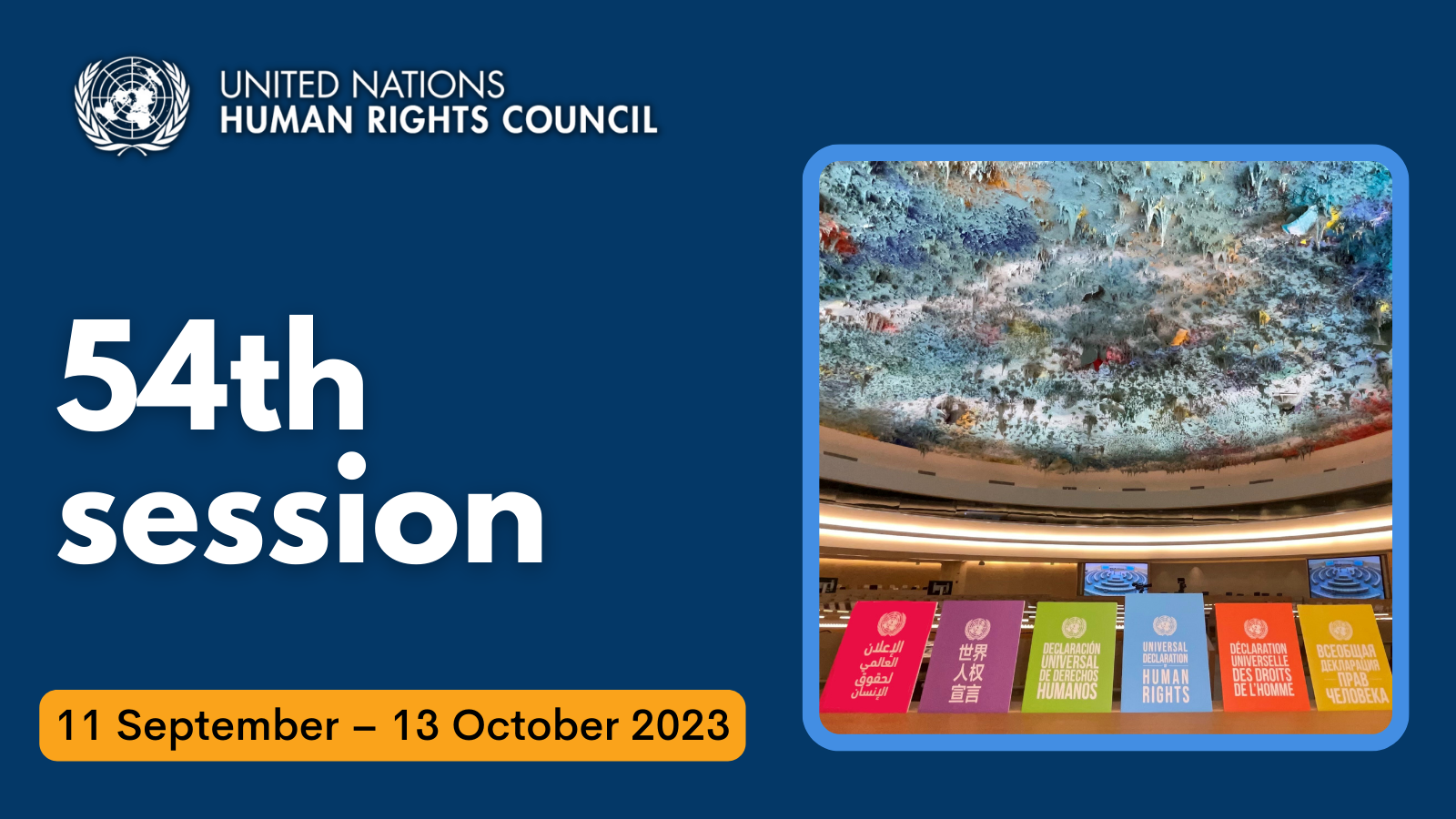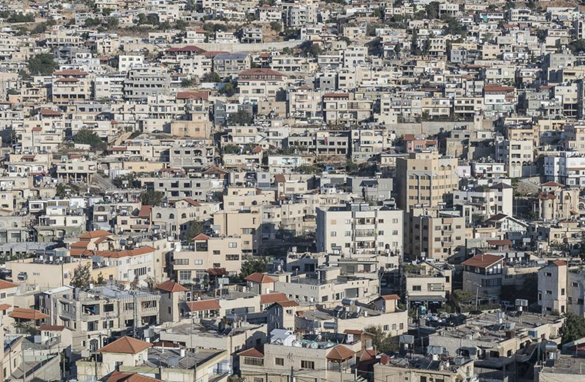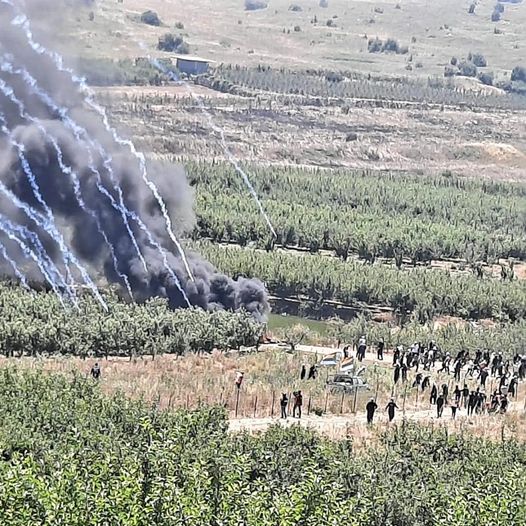
Forty years of the annexation of the Golan and imposing citizenship
Position paper
Al-Marsad-Arab Human Rights Centre for Human Rights
Forty years have passed since the Israeli government's decision to annex the occupied Syrian Golan (hereinafter, the Golan) on 14 December 1981, and to impose the laws of the occupier after 14 years of the Golan being subjected to military rule since its occupation in 1967.
Following the Egyptian-Israeli peace agreement and the returning of the Sinai Peninsula to Egypt in the late 1970s, Israeli right-wing political powers, which came to power during that period, began exerting pressure to refuse withdrawal from rest of the occupied Arab lands of Palestine and the Syrian Golan. In this context, the Israeli “Knesset” enacted the “Golan Heights Law”, and consequently imposed the Israeli civil laws over the occupied Golan. This law shocked the remaining Syrian residents of the Golan, and led to the emergence of a popular peaceful resistance movement, which later became known as the “Identity Uprising”.
Among others, at the surface, Israel has pursued a policy of de facto annexation in the first decade of its occupation, aimed at subjugating the residents of the remaining five villages - out of 340 villages and farms that were displaced and destroyed. During this decade, the Israeli military rule, the occupying power, was designed to suppress and intimidate the remaining small Syrian population. It did so through repression, restricting freedoms, arresting young people who had been engaged in underground activism and peaceful struggle against the occupation. This is in addition to subjecting the education system to Israeli control, integrating the labor force into the Israeli market, and creating a governance mechanism to ensure political subordination by co-opting local leaders, and strengthening the sectarian identity within the framework of loyalty to Israel through the education system.
This systematic policy, among others, led the official Israeli media to adopt a distortive narrative to form an Israeli public opinion alluding to the acceptance of the Syrian population of the occupied Golan and granting them a status of Israeli citizenship. However, as soon as the Israeli authorities began implementing the annexation policies, including the imposition of the Israeli citizenship on the Syrians of the Golan, this picture completely cracked. The Syrian population of the Golan instead assert edits adherence to the Syrian national identity, and its cohesive defiance against the Israeli policies of annexation, settlement, domestication and assimilation.
The most powerful expression of this national spirit was the issuance of the “National Covenant” on 14 February 1982, which declared a general open strike, as well as the social and religious boycott of people who accept the Israeli citizenship. The strike lasted for several months, and eventually prompted Israel to reverse its policy of forcefully imposing Israeli citizenship on Syrians. However, the de facto and de jure annexation of the Golan was passed, and the residents were forced to accept the status of "permanent Israeli residency", similar to the status of Palestinians in occupied and annexed East Jerusalem. The only difference was that the nationality of the Syrian residents of the Golan was declared “undefined”, as stated in their travel documents.
Although Syrian activists had insisted to receive a special identification status that would indicate their status as Syrians under occupation, in conformity with international law, their demands have been unanswered. Since then, the problem of the political-Syrian identity, its definitions and expressions in the 1980s, has strongly emerged in the public, cultural, and political realms and spaces being created – after the political battle had been lost.
Since then, on this day of each year, Syrians in the Golan have recalled the events and stories that characterized the strike that is still alive in the memory of those who designed and experienced it. Although more than four decades have passed since the annexation decision and the identity uprising, and the profound transformations due to life under occupation that affected all aspects of life, Syrians still recall the strike events, also from a critical perspective.
The Golan remains an occupied Syrian territory, in accordance with international law. As such, international humanitarian laws (IHL) constituted by the Hague Convention on the Laws and Customs of War on Land of 1907 and the regulations accompanying it, and the Fourth Geneva Convention Relative to the Protection of Civilians in Time of War of 1949 are applicable to the Israeli-occupied Syrian Golan since June 1967. Therefore, Israel’s annexation of the Occupied Syrian Golan and the forcible transfer of native Syrian inhabitants from the Golan amount to grave breaches of both IHL and violations of international human rights laws (IHRL).
The UN Security Council has reaffirmed, through resolution 497 (1981), that the acquisition of territory by force is inadmissible, in accordance with the United Nations Charter, the principles of international law, and relevant Security Council resolutions. The resolution decided that the Israeli decision to impose its laws, jurisdiction and administration in the occupied Syrian Golan Heights is null and void, and without international legal effect. It further demanded that Israel, the Occupying Power, rescind its decision.
Considering the impact of the above-mentioned transformations, the most influential matter during the last decade remains the ongoing crisis in Syria, its repercussions on the local community in the occupied Golan, and the growing fear of a disintegrating Syrian state, or parts of it. At the same time, the public discourse regarding the Golan and its future continues to fail to address the vast majority of the native population who constitute more than half a million Syrians, who were forcibly displaced by the Israeli forces. Any serious and final settlement regarding the occupied Golan, for it to enjoy legitimacy and the support of the international community, cannot continue to ignore the hundreds of thousands of Syrians displaced to other areas in their country and in the diaspora, 54 years ago and their right to return to their homeland.
The extensive destruction inflicted upon Syria at all levels because of the conflict, together with the reality of division in Syria, has come to the benefit of the occupation in realizing its ambitions to strengthen its control, claim and “sovereignty” over the Golan. Hence, the Israeli authorities accelerated the pace of settlement expansion and associated economic projects in an unprecedented manner since its occupation of the Golan in 1967 to settle tens of thousands of new settlers in Syrian lands in the coming few years. Accordingly, Israel's government has approved during its weekly meeting, held at the “Mevo Hama” community in the Golan, a plan worth $317 million to double the Jewish settler population in the Golan. Israeli Prime Minister Naftali Bennett's cabinet voted in favor of the plan that aims to build 7,300 settler homes in the region over a five-year period.
The political identity of the Syrians of the Golan, and the issue of nationality, are closely linked to the annexation policies. It still constitutes a central topic on the agenda of strengthening the occupation’s grip over the Golan, in terms of land, resources, and population. The foreseeable consequences of Israeli citizenship, such as military service in the occupation army and its security institutions, and policies to reshape the cultural and political identity of the indigenous Syrian community of the Golan, continue to constitute real concerns to the people and exacerbate their fears for the future of the next generations. In early 2018, on the eve of the imposition of the first local council elections in the remaining five Syrian villages in the occupied Golan, Al-Marsad had published statistical data that refuted the propaganda campaigns on the issue of citizenship. The figures showed the actual changes that occurred in the rates of naturalization over the years of occupation.
The latest data obtained by Al-Marsad between March 2018 to September 2021, show that:
- The number of Israeli citizenship holders, as of 30 September 2021, who are registered as residents in the four villages of the Golan: Majdal Shams, Buqa’tha, Masada, and Ain Qiniya were 3,792 nationalities.[1] This includes children who inherited citizenship of their parents, as well as marriages from outside the Golan, in addition to individuals and families who moved from the Galilee and Carmel or other places to the Golan. Meanwhile, the laws of the Israeli government still classify the vast majority of the villages’ residents, 21,346, (constitute 85% of the total population) as “permanent residents” whose nationality is “undefined”.
- During the last three and a half years, the application rates for naturalization increased by 3%, where 401 applications were submitted. This increased the total percentage of nationality holders registered in the four villages to 15% of the total number of Syrian residents.
- based on recent data obtained by Al-Marsad from the Population and Immigration Authority, the people who spontaneously applied for Israeli citizenship since June 1967 until September 2021, (including the living and the dead) is 2,159, which is equivalent to 8.5% of the current population.
- The applications submitted by residents of Majdal Shams during the last four years constitute 60% of the total requests for naturalization throughout the Golan, while its population does not exceed 46% of the total population of the four villages combined. While 2019 witnessed the peak of applications for naturalization from Buqa’tha and Masada, followed by a noticeable decrease during 2020 and 2021, this year, 2021, marked the peak in Majdal Shams, with nearly 100 applications. (Noting that some applications may include more than one person and that naturalized persons registered as residents in other places, outside the four Golan villages, are not included in these numbers).
The coercive imposition of the Israeli nationality by the occupying power on the residents of the Syrian Golan, whether as happened during the identity uprising in 1982, or by misleading, shading, and temptation, as it happens these days, contradicts a basic rule of human rights, enshrined in the Universal Declaration of Human Rights of 1948, which states that:
“[E]veryone has the right to enjoy a nationality”, and that “no one shall be arbitrarily deprived of his nationality”.
This policy also violates the provisions of the Geneva Convention relating to the Protection of civilians in time of war 1949 (Article 47), which states that:
“Protected persons who are in occupied territory shall not be deprived, in any case or in any manner whatsoever, of the benefits of the present Convention by any change introduced, as the result of the occupation of a territory, into the institutions or government of the said territory, nor by any agreement concluded between the authorities of the occupied territories and the Occupying Power, nor by any annexation by the latter of the whole or part of the occupied territory.”
It is certain is that the occupation’s policies of reshaping the identity of the Syrians in the Golan have been in alignment with its strategies and goals of at establishing alleged sovereignty over the occupied Syrian land. However, these policies will not suffice to alter the legal status of the occupied Golan in favor of the occupier, even if we assume Israel’s ability to impose its nationality on the remaining indigenous population of the Golan.
At the same time, and in light of major transformations, the adherence of the vast majority of the population of the Golan to their Syrian identity carries a great moral and symbolic value. This especially since the soft and deceptive policies pursued by the Occupying Power towards the residents of Syrian villages in the process of integrating them, and earning their loyalty, all of which dissipate when the well-being of the population and its interests collide with the projects of the Occupying Power and its agents. In return, the Occupying Power reinforces its systematic violent and repressive policies of discrimination against the Arab population, as happened during the imposition of local council elections, or during the successive phases of the disastrous "wind farm" project, which have not yet reached its final destination.
The reality of the Syrian Golan’s occupation will always generate conflicts, unless it is dismantled and brought to an end in a just manner.
--------------------------------------------------------------------------------------------------------------------------
[1] This figure excludes the village of Ghajar due to the exceptional circumstances that Al-Marsad presented in a previous statement, issued on 22 April 2018, available at: https://golan-marsad.org/ar/%d8%a7%d9%84%d9%85%d8%b9%d8%b7%d9%8a%d8%a7%d8%aa-%d8%a7%d9%84%d8%b1%d8%b3%d9%85%d9%8a%d9%91%d8%a9-%d8%aa%d8%af%d8%ad%d8%b6-%d8%a7%d9%84%d8%ad%d9%85%d9%84%d8%a7%d8%aa-%d8%a7%d9%84%d8%af%d8%b9%d8%a7-2/
Releated Posts





